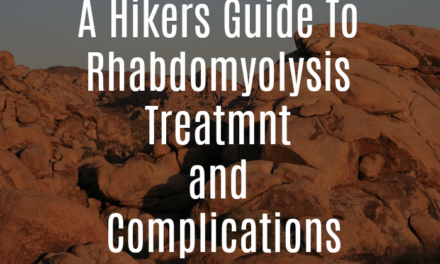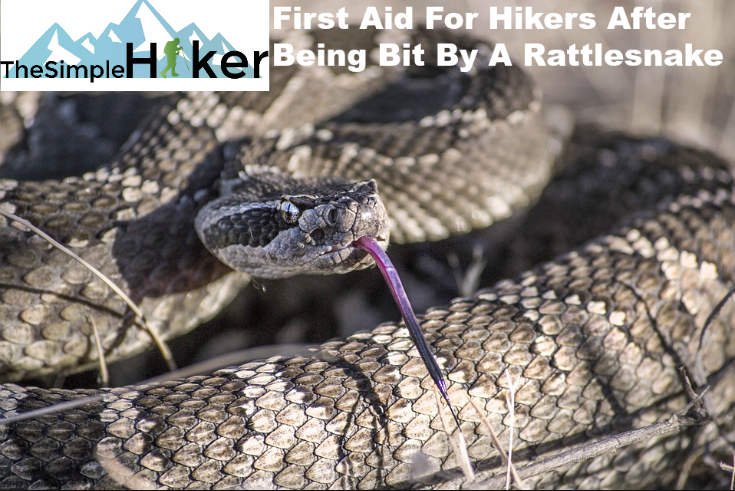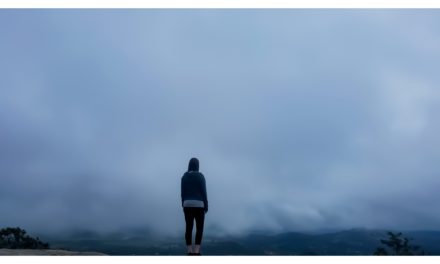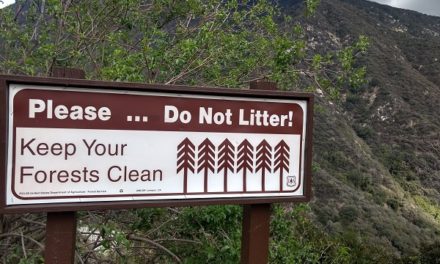Rhabdomyolysis is something that’s probably not too well known in the hiking community but it’s something I want to shed some light on. Rhabdomyoslys, or rhabdo for short, is something that every hiker should know about whether they’re at a novice, advanced, or an expert hiking level. On long or strenuous hikes, rhabdomyolysis can be something that could potentially be fatal.
What Hikers Need To Know About Rhabdomyolysis
To keep things simple, rhabdomyolysis is the breakdown of muscle proteins inside the body. Rhabdo can be caused by a variety of things. There’s also a variety of things that can increase a person’s risk of it. For this topic, I’m going to be focusing strictly on the risks associated with hiking. This type of risk is known as exertional rhabdomyolysis and is a result of one overall theme: overexertion. Exertional rhabdomyolysis essentially where the energy levels inside the body can no longer meet the demands of the muscles.
What Happens To Muscles With Rhabdomyolysis
The concept is pretty simple to grasp. When the energy supplies of the body can no longer meet the demands of the muscles, the tissue starts to break down. As muscles break down, they release proteins into the bloodstream. These broken down muscle proteins are toxic to the body. This specific damaging protein is called myoglobin. The big issue is that, the kidneys don’t like myoglobin. In fact, they pretty much hate it. Myoglobin can damage the tiny vessels of the kidney to the point where they can no longer function normally. When the kidneys fail, toxins build up in the blood and if the toxins get to unsafe levels, you can die.
Risks and Causes Of Exertional Rhabdomyolysis and Hiking
Risks of causing rhabdomyolysis are pretty easy to identify. They could be caused by just one or all of the things mentioned below:
Overexertion:
You don’t try to climb Mount Whitney the first time you go hiking, right? Unfortunately, far too many people attempt hikes that could be more than what their bodies can handle. For this reason, it’s important to take responsibility and be aware of your own fitness and hiking skill levels.
This doesn’t mean that you can’t do any cool or intense hikes. But know that you can handle a similar type of hike before you attempt something that is going to put your body to the test. Skilled hikers train before intense climbs or multi-day hikes. Hiking should be approached in the same way as gym exercises – working up to something and only pushing yourself beyond your limits when your body is capable of it.
Hot Climates:
According to the research, there is an association with hot climates, exercise, and rhabdomyolysis. Hot climates (whether humid or dry), can impair the body’s internal temperature regulation mechanisms. High internal core temperatures can cause muscle proteins to “malfunction” and become damaged leading to the breakdown of muscle. Hot and warm climates can also cause other things like loss of crucial electrolytes like sodium and potassium. Electrolyte imbalances can increase the risk of rhabdomyolysis.
Cold Climates:
Hot climates are definitely more popular at increasing the risk of developing rhabdomyolysis but cold climates shouldn’t go without a mention either. Layers of clothing can add to a body’s internal temperature in the same way. Heat can cause the body to sweat and lose electrolytes in the same way. Lastly, terrain can still cause the same amount of fatigue.
Alcohol and Drugs:
Alcohol and drugs are both known to increase the risks for developing rhabdomyolysis. Illicit drugs can also increase the metabolic and muscular demands of the body. These drugs specifically are stimulant type drugs such as methamphetamine, cocaine, and PCP. Both alcohol and illicit drugs can cause metabolic stresses can lead to electrolyte imbalances in the body and lead to cellular malfunctioning. Without properly working cells, the muscle can break down.
In general, stimulant based drugs are more well known for increasing the risk of rhabdo. Although, I once treated a patient in the ER attempting to do the Pacific Crest Trail. The person was only as far as the San Diego portion of the trail. He was admitted for rhabdomyolysis as he was going through the trail smoking marijuana and neglecting to take care of his body. Another known medication that increases the risk for rhabdomyolysis are statins. Statins can be toxic to muscle cells those with hypothyroidism can be particularly at risk.
Electrolyte Imbalances:
When it comes to hiking, especially if it’s a longer distance or more strenuous hike, nutrition can be more important than the actual hike itself. If the hike is intense enough, you’re going to lose precious salts like potassium and sodium through sweat. As muscles contract, they release potassium from cells. Potassium helps increase blood flow to the muscles as well as help muscles to contract.
When potassium is lost, muscle contraction becomes impaired and blood flow is lost which can increase the risk of rhabdo due to a lack of energy supply. Low sodium is another electrolyte lost during intense workouts. Low sodium along with low potassium levels can alter the way cells work and increase the risk for rhabdomyolysis.
Genetics:
Some people are have genetic predispositions that put them at risk for developing rhabdomyolysis.
Symptoms Of Rhabdomyolysis
One of the most well known methods for self-diagnosing rhabdo is a coke colored urine. The brownish/red color is caused by the breakdown of muscle tissue that is being filtered out by the kidneys. That broken down muscle has to go somewhere so it ends up in your urine. If you start noticing some funky colored urine after doing some strenuous hiking, head to the emergency room right away – you probably have rhabdo.
Although coke colored urine is usually a pretty conclusive sign of rhabdo, it’s not the only symptom. Other signs and symptoms might include, muscle failure (during the time of exercise), muscle pain, muscle stiffness, muscle cramping, muscle weakness, and swelling. Keep in mind, over half of rhabdomyolysis patients might not report any muscular symptoms at all. A person also doesn’t have to have coke colored urine to have rhabdo.
One of the most definitive diagnostic tests of rhabdo is a blood test called a creatine kinase (CK). A CK test measures a byproduct of muscle breakdown. If this test is significantly elevated and your symptoms meet the condition, you’ll likely be diagnosed with rhabdo.
Complications Of Rhabdomyolysis
One of the most common complications of rhabdo is kidney (renal) failure. As I already mentioned, the passing of broken down muscle tissue through the kidneys is damaging to your small kidney vessels and can cause the kidneys to shut down. Some patients may experience lifelong kidney complications because of this. For hikers, one thing that can increase the risk of rhabdo and kidney complications is dehydration. Drinking enough fluid is essential to preventing rhabdo.
Hopefully, the kidneys recover on their own through simple IV fluid hydration. However, some cases can lead to a patient needing emergent dialysis. This happens because as the kidneys stop working, the body loses it’s ability to filter toxins from the blood. These can cause electrolyte and acid imbalances in the blood. If theses imbalances become too extreme, a patient can die.
Don’t Take Rhabdo Lightly – Get Diagnosed
Diagnosing rhabdo is quite easy. All it requires is a simple blood and urine test. A lot of rhabdo probably goes undiagnosed. Originally, exertional rhabdo was isolated to the military and athletes because of their vigorous workouts. However, as boot camp and Cross-Fit style workouts have become more popular, the rates of incidence have been increasing.
As hiking continues to become more popular and more strenuous hiking challenges have taken place, it’s likely that rhabdo will become more common to the hiking community. If you feel something is wrong with your body after doing a hike or if you notice any of the mentioned signs and symptoms, please go to an Urgent Care or Emergency Room as soon as possible.
In part two of my series on hiking and rhabdomyolysis, I’ll be talking about things you can do to prevent rhabdo and how it’s treated once a diagnosis is made. Please feel free to ask any questions in the comments.
Sources:





